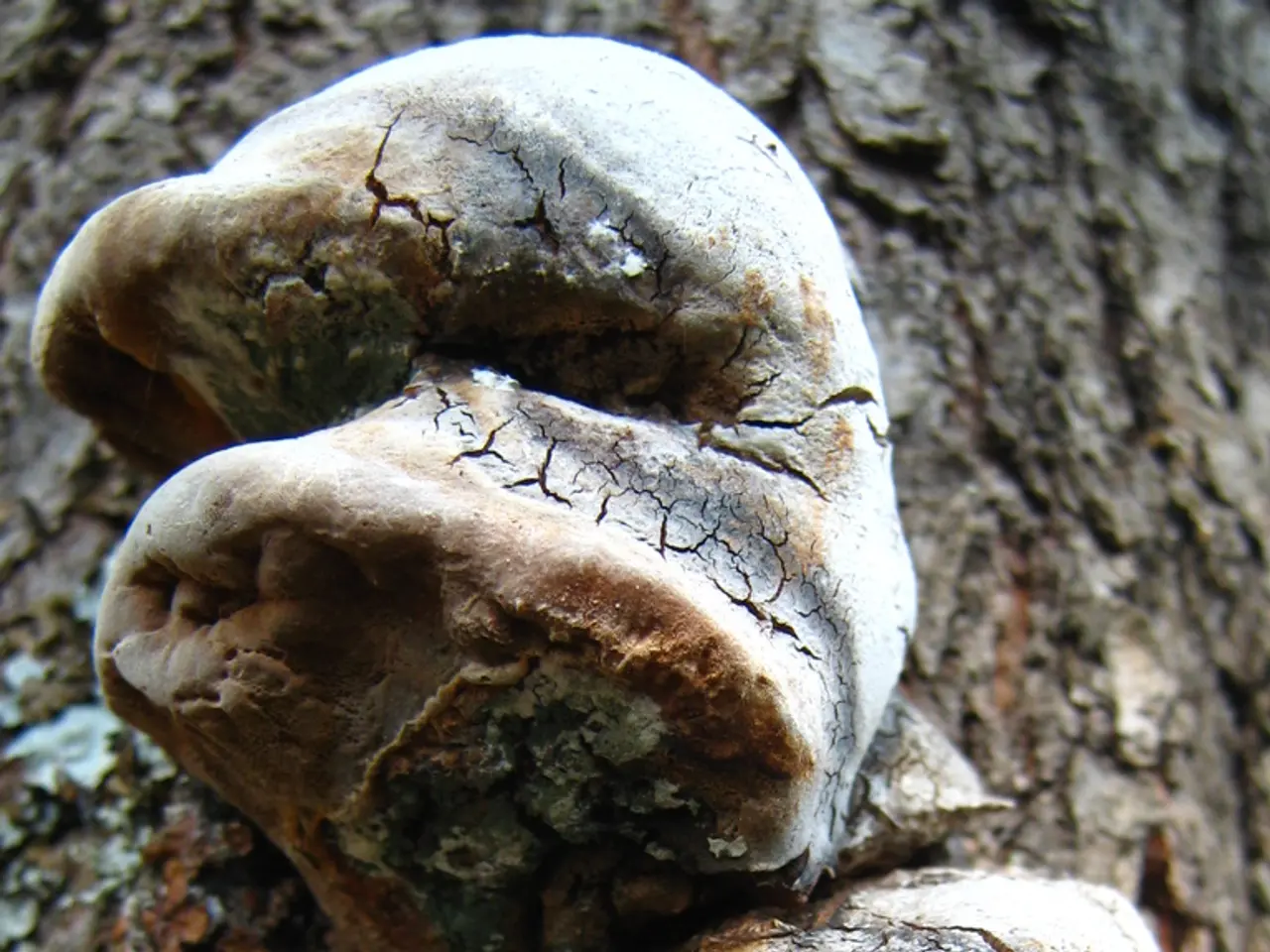Pine Tree Disease: Diplodia Tip Blight Affecting Two-Needled Pines
Diplodia Tip Blight: A Threat to Pine Trees
Diplodia tip blight is a fungal disease that primarily affects two- and three-needled pine species, such as Austrian, Scots, ponderosa, mugo, and red pines. This disease can be harmful to mature trees, often those under stress from drought or poor site conditions, but it can also affect nursery stock.
Symptoms
The symptoms of Diplodia tip blight are easy to spot. Dieback or blight of branch tips, needles turning brown before maturity, resin exuding from infected shoots, and the presence of tiny black fungal fruiting bodies on needles and infected cones are all indicators of the disease. These fungal fruiting bodies, known as pycnidia, produce spores that spread the disease. In severe cases, the infection can progress down branches and cause stem cankers on weakened trees.
Prevention and Management
Preventing Diplodia tip blight involves maintaining the health of the tree and reducing its stress levels. Drought, root restrictions, or poor site conditions can increase the tree's vulnerability, so well-maintained trees are less likely to succumb to the disease.
Cultural practices such as removing and destroying infected shoots and cones can help reduce inoculum sources. Pruning out infected branches during dry weather can also help limit the spread of the disease.
Fungicide treatments can be an effective control measure, but timing is critical. Protectant fungicides can suppress Diplodia if applied preventively, especially in spring when new shoots begin growth. Systemic fungicides injected directly into the cambial zone via specialized equipment provide effective chemical control without damaging tree sapwood and allow repeated treatments.
An integrated approach combining cultural care to reduce tree stress and pruning to remove infected parts, along with targeted fungicide applications during active shoot growth, offers the best management for Diplodia tip blight in pines.
Infections often intensify within the same tree when it is exposed to water stress, particularly drought conditions. To avoid this, it is recommended to avoid planting susceptible pines in areas that are prone to cool and wet weather in the spring followed by drought or dry soil conditions during the rest of the year.
The fungus overwinters in infected needles, bark, cones, and needle litter beneath the tree. Older cones are also susceptible to the disease and often support abundant fruiting on their scales. Repeated infections over several years can cause the majority of the tree to appear brown and entire branches to die, deforming the tree.
A telltale sign of Diplodia tip blight is the presence of tiny black, fungal fruiting bodies (pycnidia) on the surface of infected needles and cones. Developing cone scales are commonly infected, although they are not damaged. The disease often begins on new shoots, turning the new needles brown before they are fully formed and can lead to resin being exuded from infected new shoots.
In some cases, the infection may expand down the branch, but the pathogen can also infect older tissues directly through wounds caused by insect activity or hail. The disease can be seen as the blight or dieback of the tips of branches, easily visible from a distance.
Commercial formulations of common fungicides, such as thiophanate methyl, propiconazole, azoxystrobin, and others registered for use on Diplodia blight, are available for application by professional arborists and landscapers.
[1] University of Massachusetts Amherst. (n.d.). Diplodia Tip Blight. Retrieved from https://ag.umass.edu/landscape/fact-sheets/diplodia-tip-blight
[2] University of California Agriculture and Natural Resources. (n.d.). Diplodia Tip Blight. Retrieved from https://ucanr.edu/sites/pinehealth/Diplodia_Tip_Blight/
[3] Purdue University Extension. (n.d.). Diplodia Tip Blight. Retrieved from https://extension.purdue.edu/extmedia/FNR/FNR-172-W.pdf
[4] Michigan State University Extension. (n.d.). Diplodia Tip Blight. Retrieved from https://www.canr.msu.edu/news/diplodia_tip_blight_in_pines
[5] Ohio State University Extension. (n.d.). Diplodia Tip Blight. Retrieved from https://ohioline.osu.edu/factsheet/hyg-5329
Soil health and fitness-and-exercise practices can contribute to overall pine tree health, making them less susceptible to diseases like Diplodia tip blight. Well-drained soil and regular watering can reduce stress on the tree, improving its resilience against fungal attacks. Additionally, science plays a crucial role in understanding the disease and developing effective control measures, such as the use of health-and-wellness practices for tree care and the application of appropriate fungicides for preventative and curative treatments.




